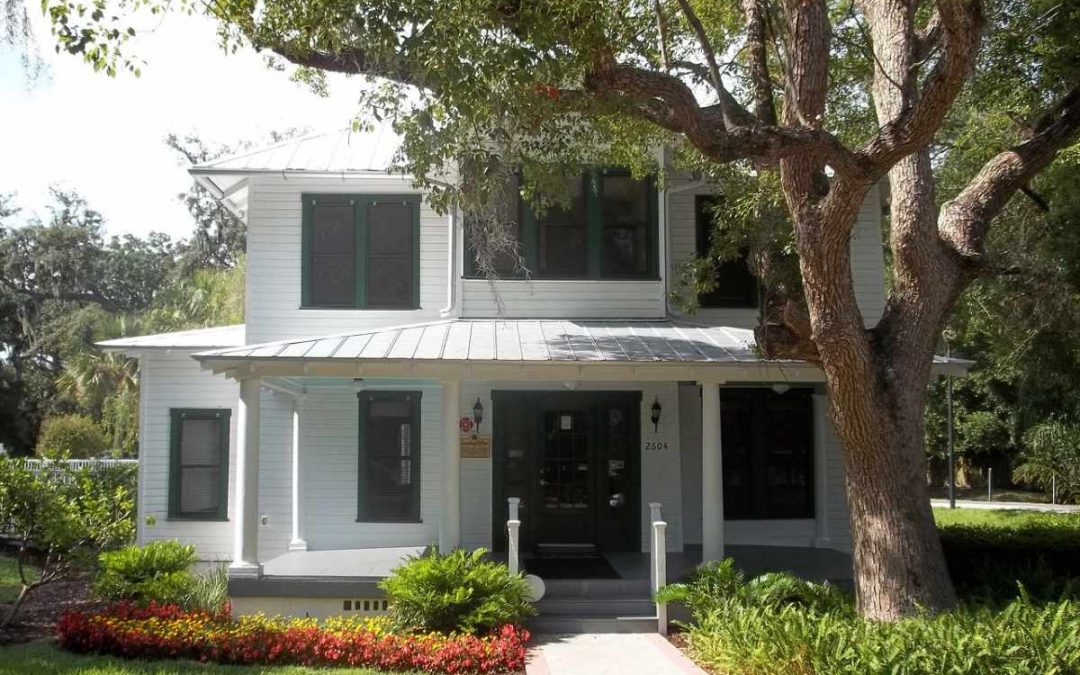Tampa has so much to offer, from Ybor City to Lowry Zoo to the Gulf Coast beaches. So why spend your weekends weeding the yard when you could be out with the family enjoying the sites?
If you want more free time and lessen your yard work load, make your landscape easy to maintain. From xeriscaping to native plants, check out these 8 low-maintenance landscaping ideas for Tampa.
In this article, we’ll cover:
8 Low-Maintenance Landscaping Ideas for Tampa
Yard work is a year-round chore in Tampa with the mild climate and hot, humid temperatures. Beat the heat by trying these low-maintenance landscaping ideas so that you can spend less time working on your yard and have more time to enjoy the Tampa sights.
1. Try Xeriscaping
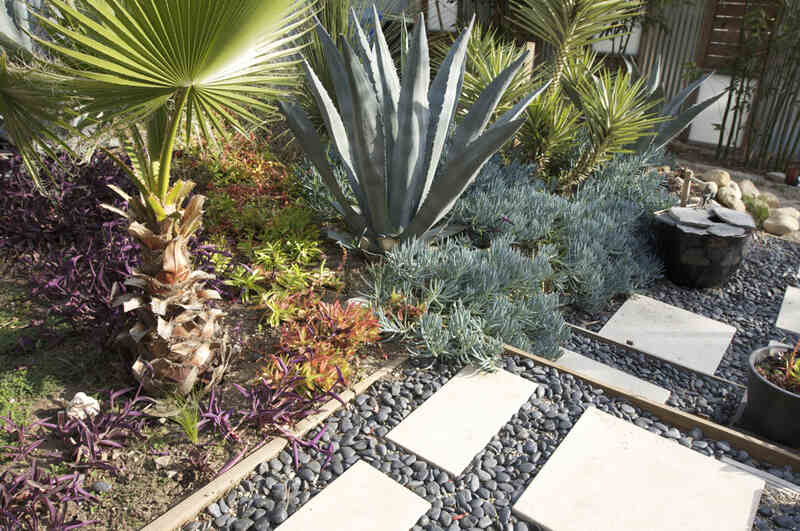
Photo Credit: Jeremy Levine / Flickr / CC BY 2.0
A xeriscape is landscaping that requires very little water, which means they require less care. Natural rainfall should be sufficient for a xeriscape to survive without your landscaping needing any supplemental water.
Xeriscaping includes:
- Growing plants that don’t need a lot of water
- Hydrozoning by grouping plants with similar water requirements together
- Using mulch to help the soil retain moisture
- Trying drought-tolerant grasses
- Avoiding turfgrass
- Growing drought-tolerant landscaping plants such as succulents
- Installing an efficient irrigation system
- Using yard decor to take up space
- Installing hardscaping like pavers, walkways and fire pits
- Installing rock gardens or decorative rocks
Advantages of xeriscaping:
- Decreases the amount of time spent taking care of landscaping plants
- Saves on water costs
- Conserves water resources
- No need for fertilizers or pesticides
- Less mowing
- Helps prevent weed growth
Estimated cost: Turning your traditional landscape into a xeriscape costs $1.50-$2.50 per square foot. Depending on the nature and scope of the project, overall costs range from $8,737 to $22,226. Although the initial cost is expensive, decreased watering and maintenance expenses save homeowners money long-term.
2. Grow Native Florida Plants
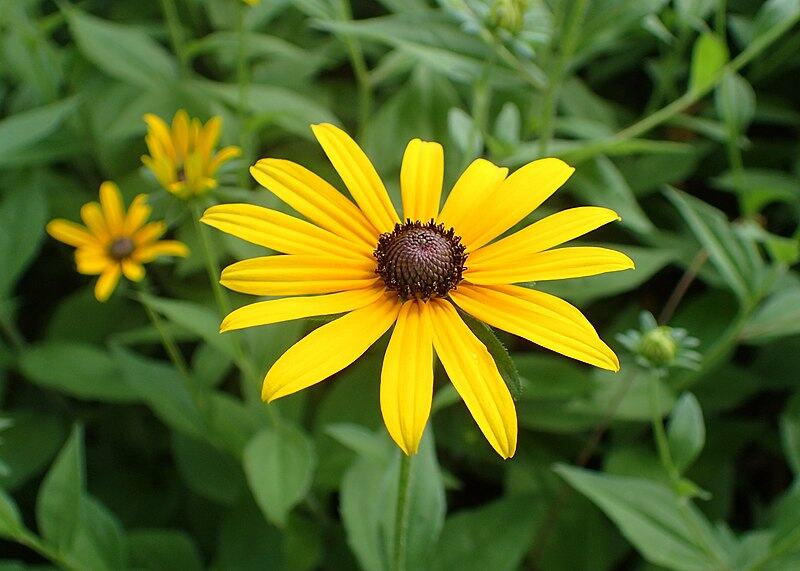
Photo Credit: Krzysztof Ziarnek, Kenraiz / Wikimedia Commons / CC BY-SA 4.0
If you want your landscaping to thrive with the minimum amount of effort, a simple solution is to plant Florida-friendly native plants that thrive in subtropical, humid temperatures.
Look for plants that are drought-tolerant and pest resistant. The more durable and hardy a plant, the more likely it is to survive on its own without a helping hand. Avoid plants that are delicate or picky, as these take more time and effort to keep happy.
Some Florida native plants that are good for Tampa landscapes:
- American beautyberry
- Black-eyed Susan
- Beach sunflower
- Carolina jessamine
- Coral honeysuckle
- Firebush
- Hairy leafcup
- Joe-Pye weed
- Muhly grass
- Oakleaf hydrangea
- Prairie Iris
- Rusty lyonia
- Sabal palm tree
- Southern wood fern
- White fringe tree
- Yellow star anise
- Zephyr lily
Low-maintenance native plants require minimal care and don’t need regular watering, pruning, or spraying in order to thrive. These Florida-friendly plants are acclimated to the local environment. Look for plants that are:
- Drought-tolerant
- Pest-resistant
- Slow-growing
- Don’t require fertilizer
Advantages of native plants:
- Native plants create a natural habitat for local wildlife
- They are adapted to Florida’s climate
- Resistant to pests and diseases
- Native plants don’t require pesticides and chemicals, making them eco-friendly
- Saves money on pesticides and chemicals
Estimated cost: Average prices for native plants are $15 to $50 per shrub, $5 to $50 per vine, and $150 and $3,000 per tree. For a more thorough project, homeowners can expect to pay $585 to $3,300 for a professional flower bed installation.
3. Add Hardscapes to Your Yard
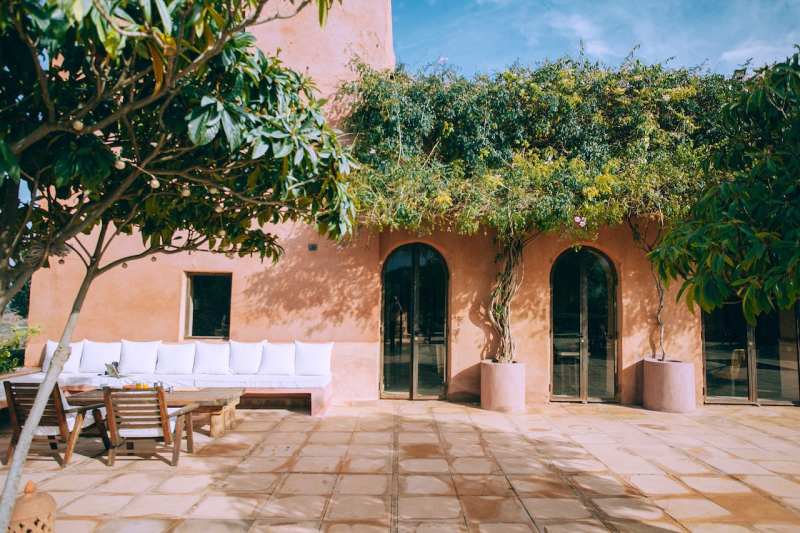
Photo Credit: Pexels
If you are looking for ways to reduce living space for your landscaping plants and grass to grow, try filling those places with hardscapes. Some ideas you can try are:
- Decorative rocks
- Rock gardens
- Stone pavers
- Garden walkways
- Pergolas
- Patios
- Decks
- Fire pits
- Retaining wall
Hardscapes are easy to maintain because they don’t require trimming, fertilizing, watering, or any of the time-consuming tasks that caring for a lawn and plants require. The only thing that hardscapes require is an occasional cleaning.
Advantages of hardscaping:
- Easy to maintain
- Conserve water resources
- Increase home value
- Boost curb appeal
- Decrease the amount of high-maintenance grass
- Can serve practical or recreational purposes
Estimated cost: Hardscaping can be expensive. The price of the project depends on what kind of landscape design and type of hardscape you are installing in your outdoor space.
| Project | Price |
| Decorative rock | $460 – $1,000 |
| Rock garden | $460 – $1,000 |
| Stone paver | $8 – $22 per square foot |
| Pergola | $2,000 – $9,000 |
| Gazebo | $4,828 – $9,930 |
| Patio | $2,000 – $6,500 |
| Deck | $4,000 – 11,000 |
| Fire pit | $500 – $3,000 |
| Retaining wall | $3,622 – $9,582 |
4. Go with Groundcovers
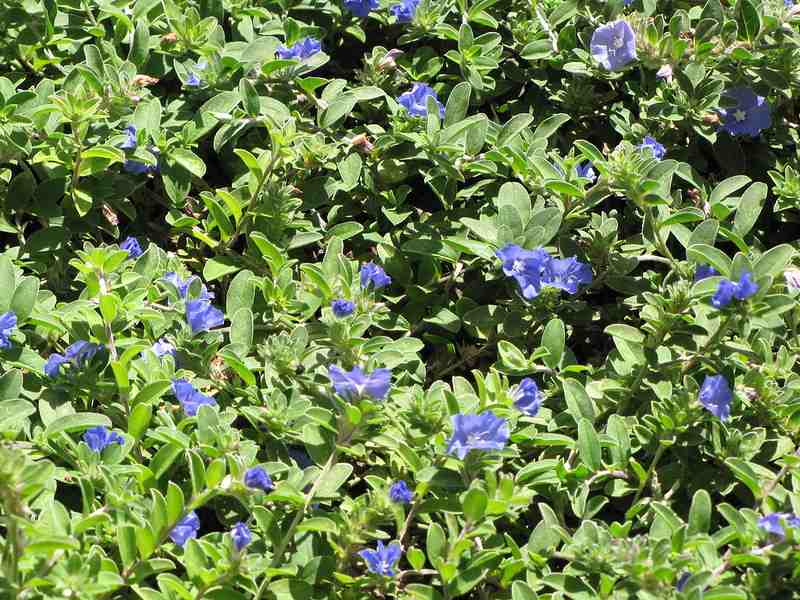
Photo Credit: Forest and Kim Starr / Flickr / CC BY 2.0
Grass takes a long time to mow in the blistering summer heat. Instead of grass, try planting groundcover. These low-growing plants only grow a few inches tall but they act as filler that keeps your lawn green and full. They provide a natural look and require little to no mowing, Groundcovers also attract bees and butterflies to your yard.
Some popular groundcovers in Tampa yards include:
- Asiatic jasmine
- Azaleas
- Blue daze
- Cast-iron plant
- Perennial peanut
- Sedum
Advantages of groundcovers:
- No mowing necessary
- Attract less pests and weeds than traditional grass lawns
- Require less water than turfgrass
- Don’t need fertilizing
- Easy to maintain
- Keeps natural look
Estimated Cost: Trading turfgrass for groundcover can cost $4.50 to $26 per square foot. The type of groundcover will determine the price. If homeowners have to remove their grass from their lawn first, it will cost extra.
5. Install Artificial Turf
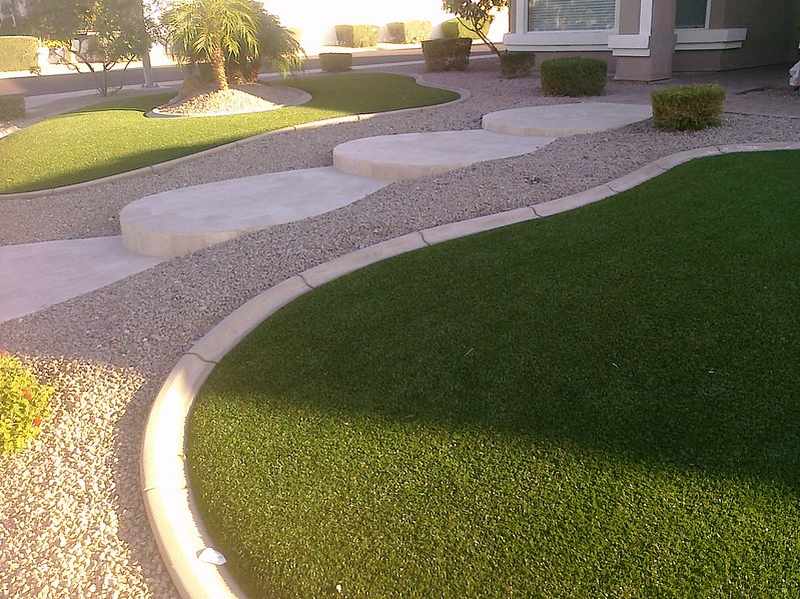
Photo Credit: Nick Bastian / Flickr / CC BY-ND 2.0
If you want a green lawn year-round without the work it requires, consider installing artificial turf. Artificial grass mimics the appearance of real grass. What’s better is that it comes in a variety of different types so you can choose the perfect grass type for your yard. Some artificial turfs are so life-like that your neighbors won’t be able to tell it isn’t real grass!
Advantages of artificial turf:
- Conserves water
- Doesn’t need mowing
- Doesn’t need fertilizers, pesticides, or herbicides
Estimated Cost: While prices vary depending on the type of artificial grass you choose and the shape and size of your yard, artificial turf costs about $5-$20 per square foot. Although the upfront costs are expensive, artificial turf doesn’t require maintenance, which saves homeowners a lot of expenses on watering, mowing, and fertilizing.
6. Plant Perennials
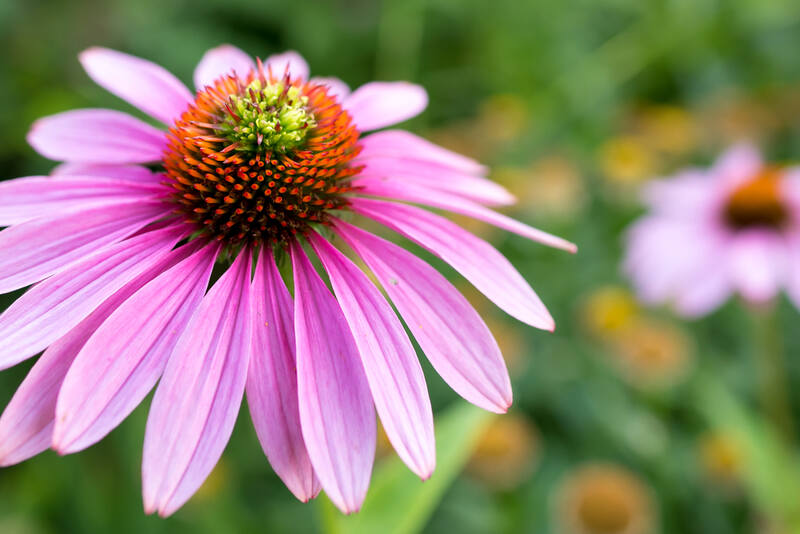
Photo Credit: PxHere
If you want a low-maintenance yard, it only makes sense to pick perennial plants. Unlike annuals or biennial plants, perennial plants live for several years. They usually go dormant during the winter and come back again during the warm season.
If you’re tired of buying and planting new plants in your plant beds every year, try investing in perennials for your yard.
Advantages of perennials:
- Saves you time and the hassle of having to replant every year
- Saves money on plant purchases
- Deep root system improves soil
- Plants live year-round for many years
Estimated Cost: The cost depends on the type of plant. All plants are priced differently and some plants are more expensive than others. Perennials typically are more expensive than annuals, although the long-term cost of perennials will be cheaper than replacing your plants every year.
7. Use Mulch in Plant Beds
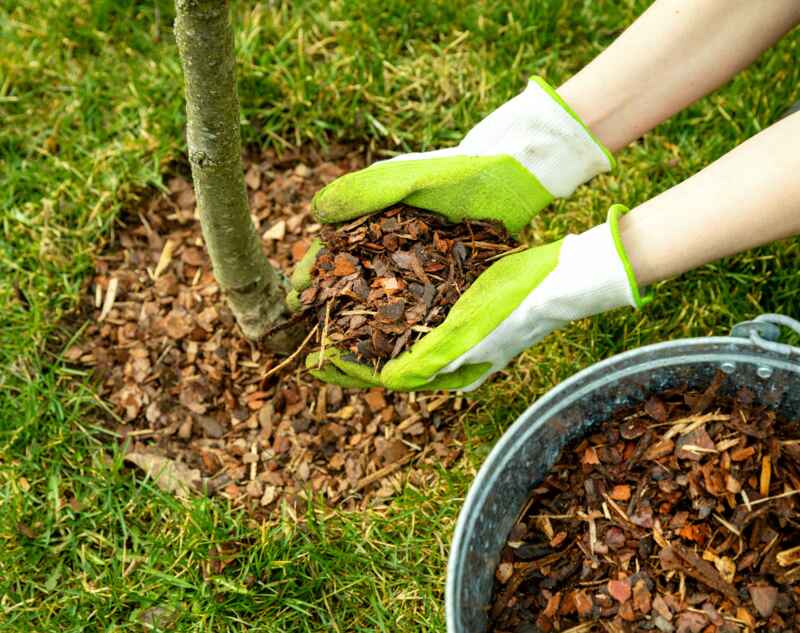
Photo Credit: ronstik / Canva Pro / License
Mulch retains water, keeping your plant beds moist during the sweltering summer days. The longer the soil retains moisture, the less frequently your plants need to be watered.
There are two different categories of mulch: organic and inorganic. Organic mulch is made from plant material such as tree bark, grass clippings, or pine needles. You will have to reapply mulch to your yard more frequently, since after a while organic mulch decomposes and will need to be replaced.
Inorganic mulches are made of plastic or stone. Although inorganic mulches are low-maintenance and don’t need to be reapplied to flower beds as frequently as organic mulches, they aren’t as hurricane-resistant as organic mulches are.
Mulch is inexpensive and readily available. Spreading a layer of mulch around your plants is an easy DIY job that will help your landscape thrive with little maintenance.
Advantages of mulch:
- Retains moisture
- Reduces weed growth in plant beds
- Conserves water
- Saves on water bills
- Slows down soil deterioration
- Regulates soil temperature
- Organic mulches add nutrients to the soil
- Aesthetically appealing
Estimated costs: The price for a bag of mulch costs depends on the type of mulch. Some mulch types, such as leaves or pine needles, are free if they are found around your own yard.
- Wood mulch: $3 to $5 per 2-cubic-foot bag
- Rubber mulch: $7 to $10 per 0.8-cubic-foot bag
- Landscape gravel: $4 to $30 per 0.5-cubic-foot bag
- Wood chips: $70 per cubic yard
- Bark mulch: $65 per cubic yard
8. Install an Automatic Irrigation System
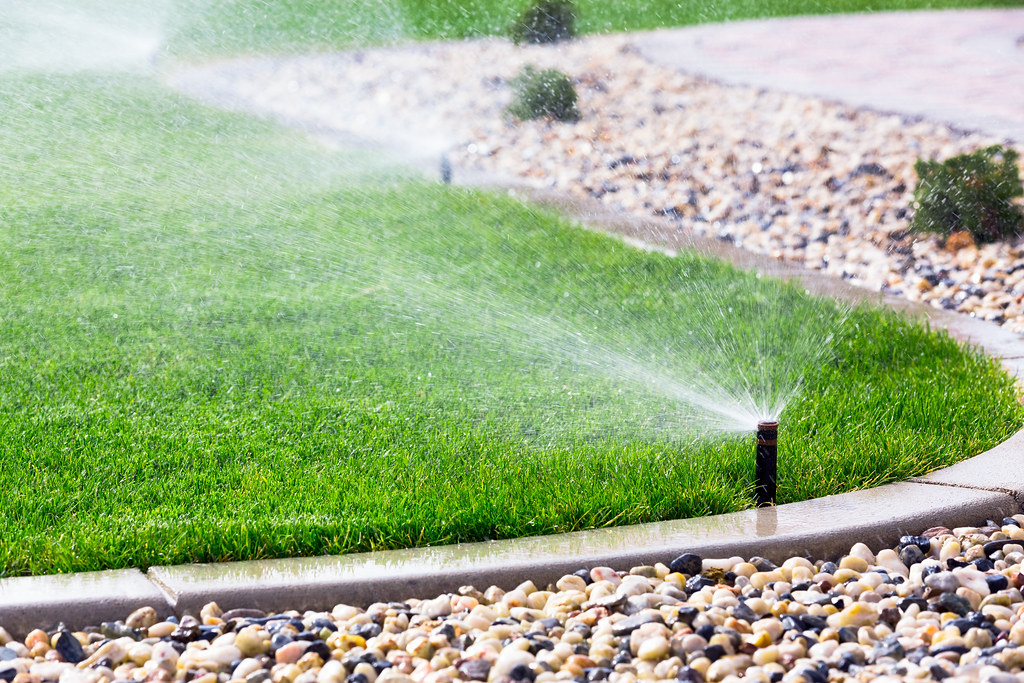
Photo Credit: Aqua Mechanical / Flickr / CC BY 2.0
Automatic irrigation systems put your mind at ease, as they can be programmed to automatically water areas of the yard with a specific amount of water. With this preprogrammed technology, you can have a watered lawn without the stress of manually watering your grass yourself.
Some sprinklers have a rain sensor that allows them to automatically adjust to local water levels. Automatic irrigation systems can also be adjusted by season to fulfill your lawn’s water needs.
Homeowners can either have an in-ground sprinkler system installed or buy an above-ground sprinkler head. In-ground irrigation systems have an underground water source. Above-ground sprinkler heads must be attached to a water source above the ground, typically a hose.
Advantages of an automatic irrigation system:
- Saves water, time, and money
- Accurately meet your lawn’s water needs
- Ensures even distribution of water
- Automatically turns on when water levels are too low
- Watering with sprinkler systems is more eco-friendly than watering by hand with a hose
Estimated costs: The average price of an in-ground automatic irrigation system is between $2,400 and $4,200. An above-ground sprinkler hose attachment costs between $9 and $36.
FAQs About Low-Maintenance Landscaping Ideas for Tampa
With Tampa’s hot and humid weather, you want to get a drought-tolerant lawn so you don’t have to spend so much time watering the grass. Bermuadagrass consumes the least amount of water. Other good options are bahiagrass, buffalograss, and centipedegrass.
Warm-season grasses that can tolerate a lot of foot traffic, are disease-resistant, and drought-tolerant are the most hardy types of grasses. Low-maintenance grasses that are perfectly suited for Tampa’s climate include:
• Bahiagrass
• Buffalograss
• Centipedegrass
• Zoysiagrass
One of the cheapest and simplest ways to save time on landscaping maintenance is to use mulch in your landscaping. Organic mulches are inexpensive, great for the environment, and often the materials can be found around your own yard.
Here are some ways you can make your own mulch:
• Compost. If you have a compost bin, use that compost as mulch for your plant bed.
• Grass clippings. If your lawnmower has a bag, then simply use the grass clippings in the bag for mulch. Otherwise, after you mow the lawn, rake up the grass clippings across your lawn and use them for mulch.
• Leaves. Rake up leaves in a pile and then run your lawnmower over the leaves several times to chop them up into mulch.
• Pine needles. Pine needles can be chopped up in a wood chipper to make mulch. They are often combined with homemade wood mulch to make them extra effective.
• Tree branches. Fallen or pruned branches from your tree can be used as mulch. Put the tree branches and sticks through a wood chipper to chop them up into mulch. If you don’t have a wood chipper, you can rent one.
Try mixing grass clippings with wood chips to create an effective mulch that is full of nutrients for your flower bed.
Ready for Landscaping that Saves You Time?
If you’re tired of maintaining your landscaping, it’s time to redesign your Tampa yard. You can have an elegant landscape that is the envy of the neighborhood without all the effort of caring for a traditional lawn. To free up your time, hire a local pro to take care of the trimming, watering, and mowing for your lawn.
Main Photo Credit: Robles House in Tampa, FL / Ebyabe / Wikimedia Commons / CC BY-SA 3.0

